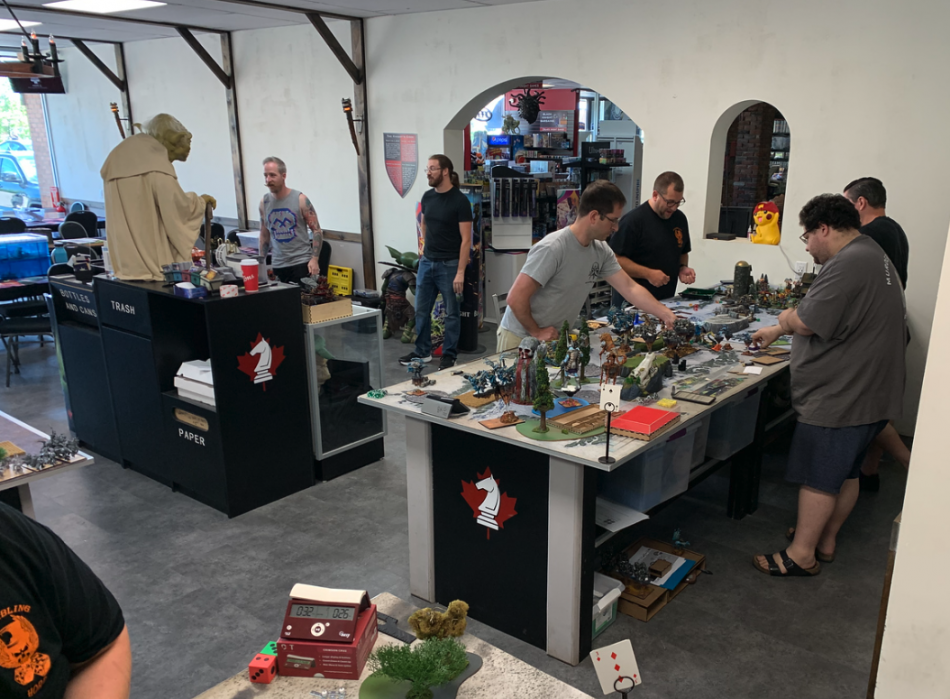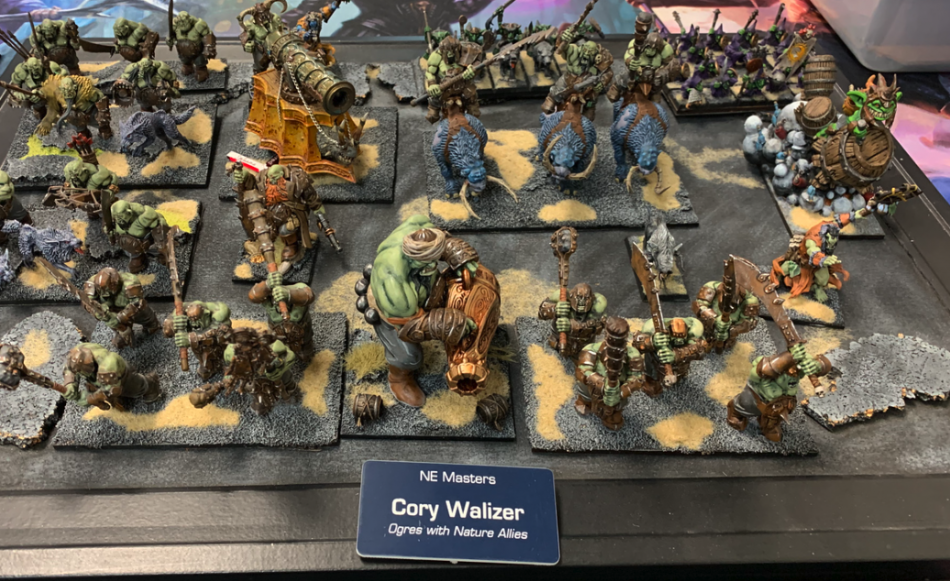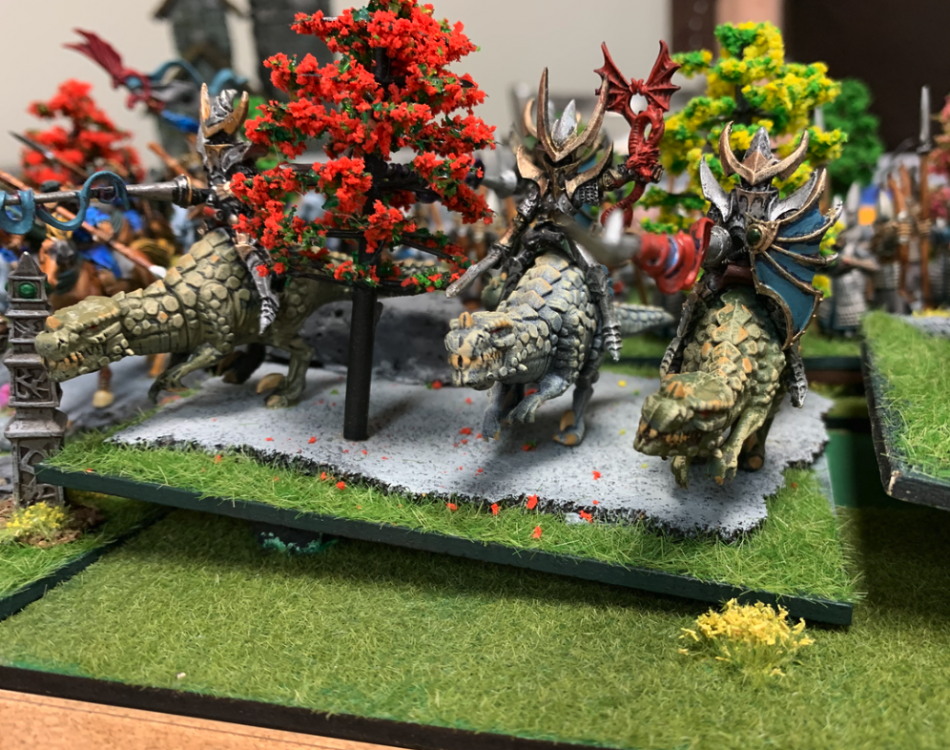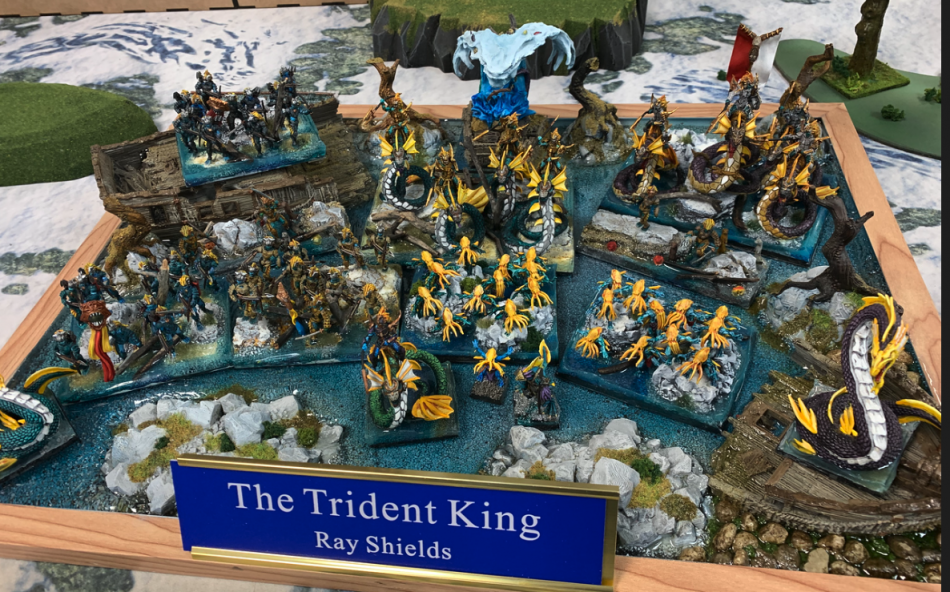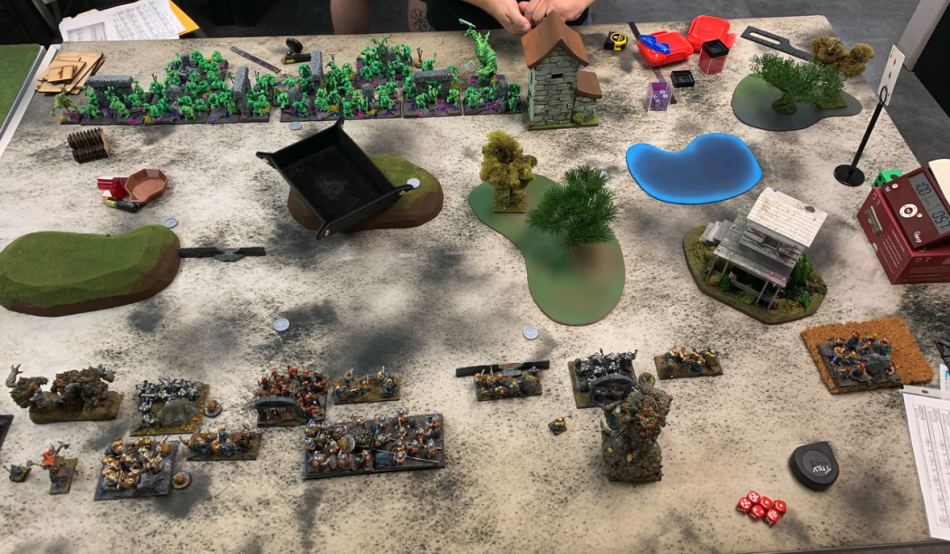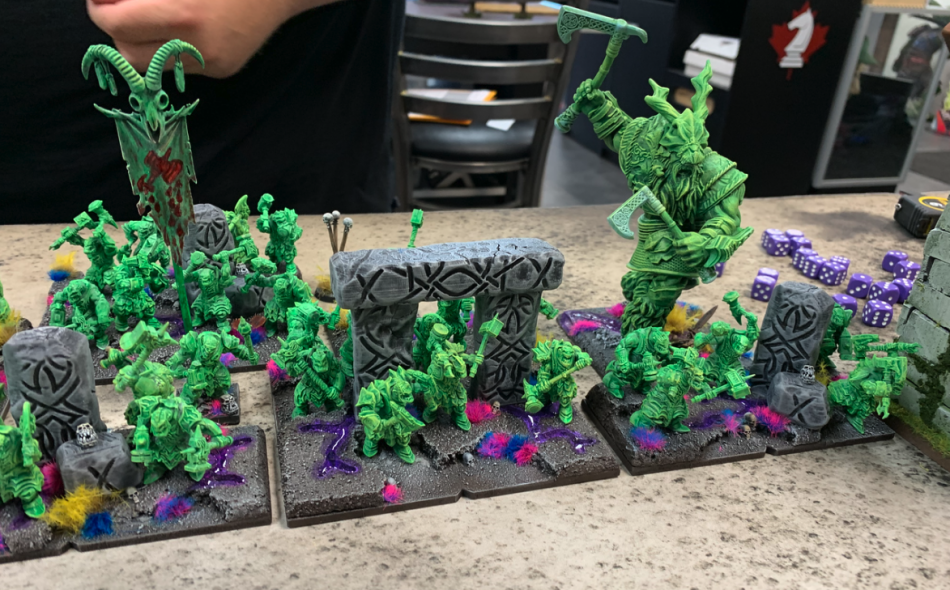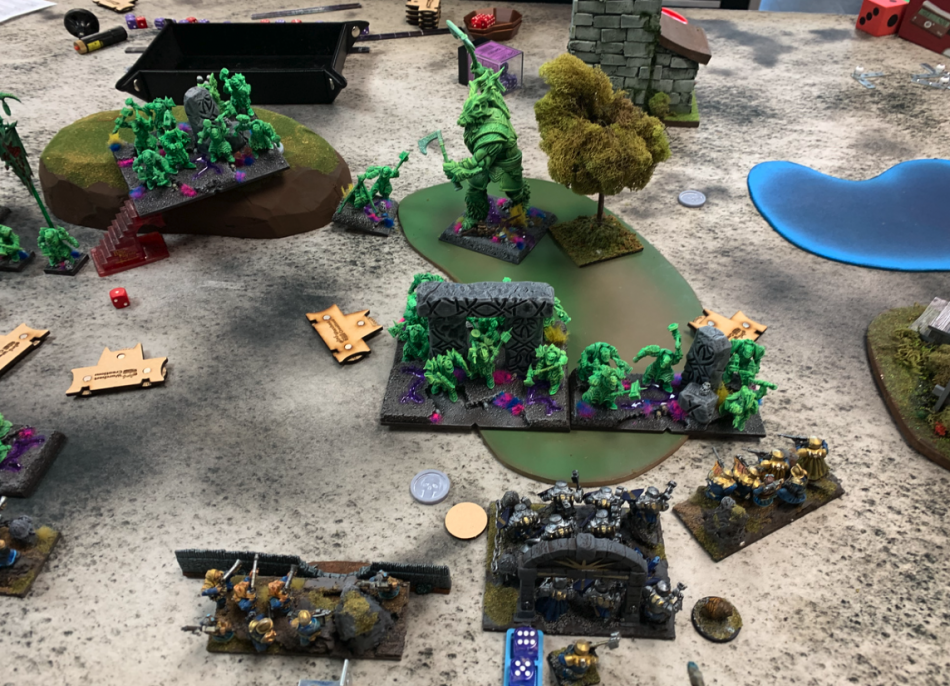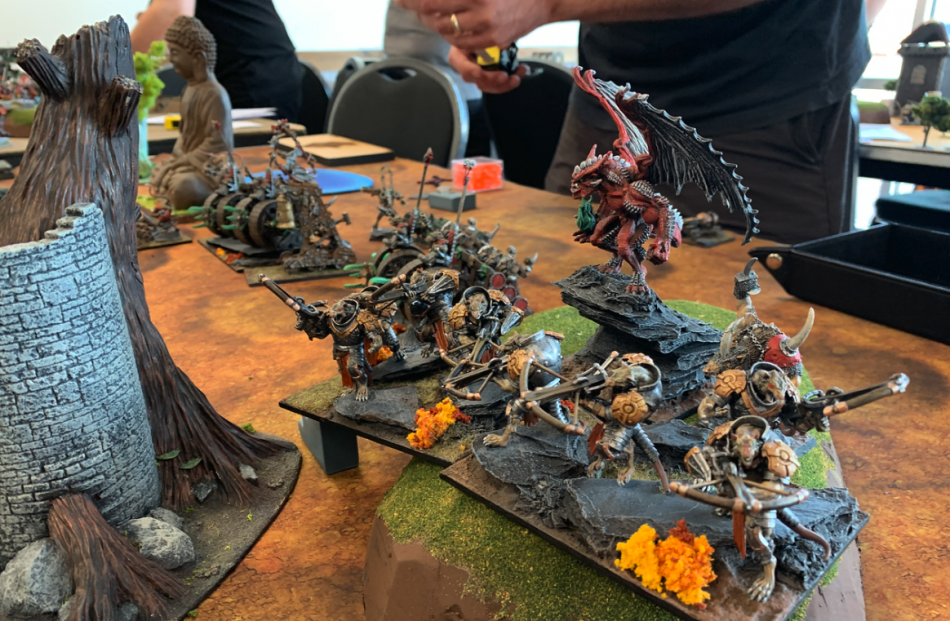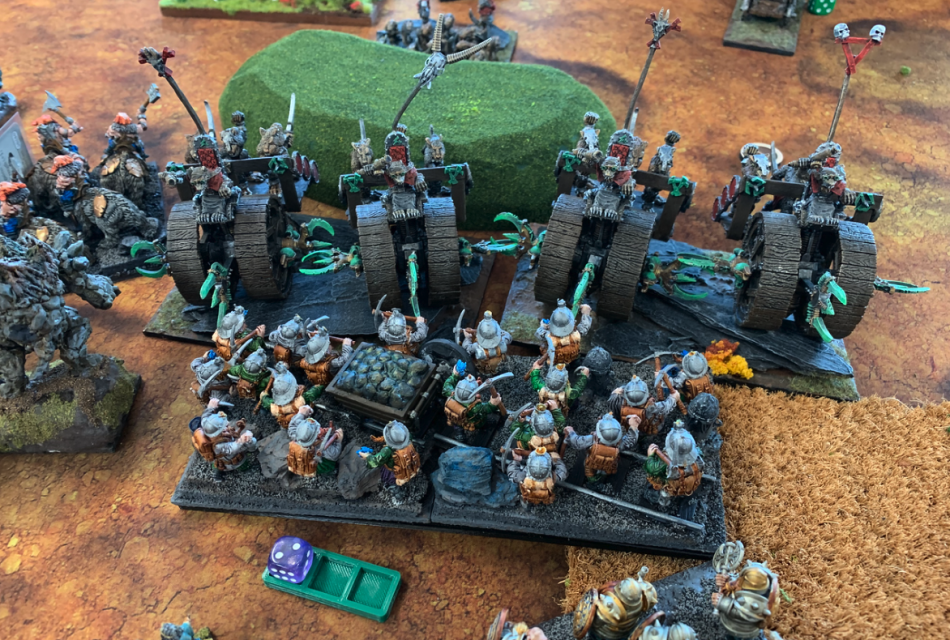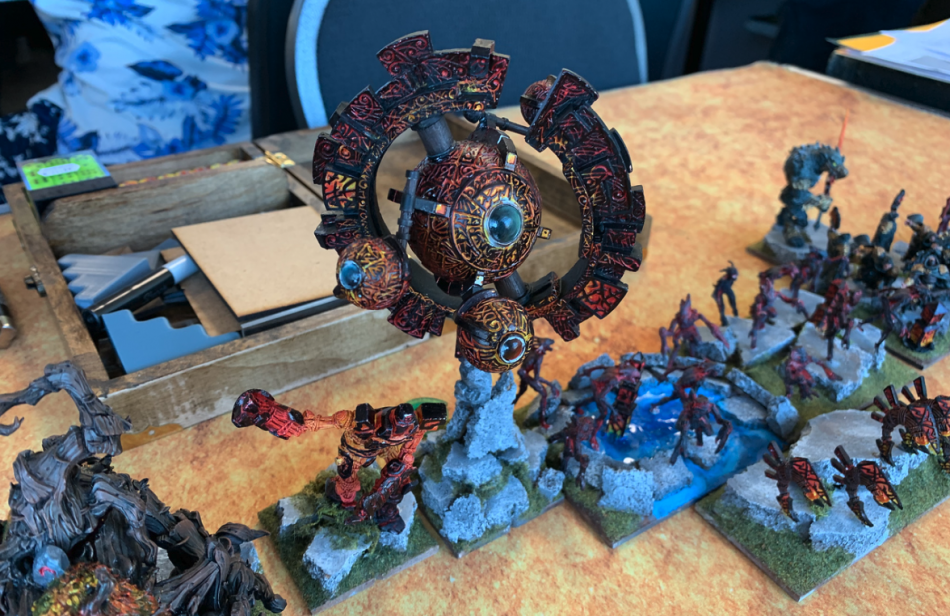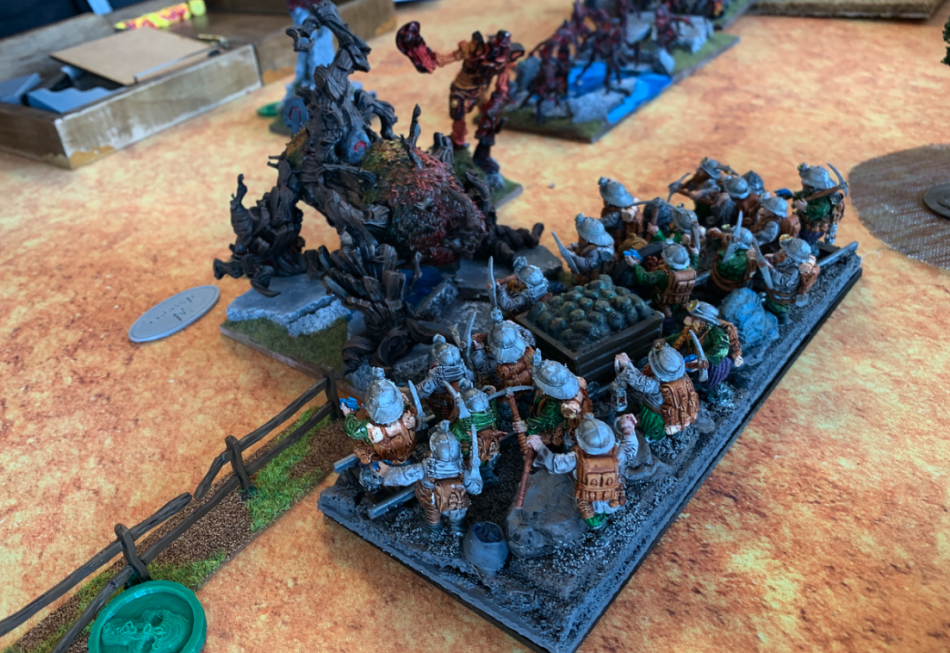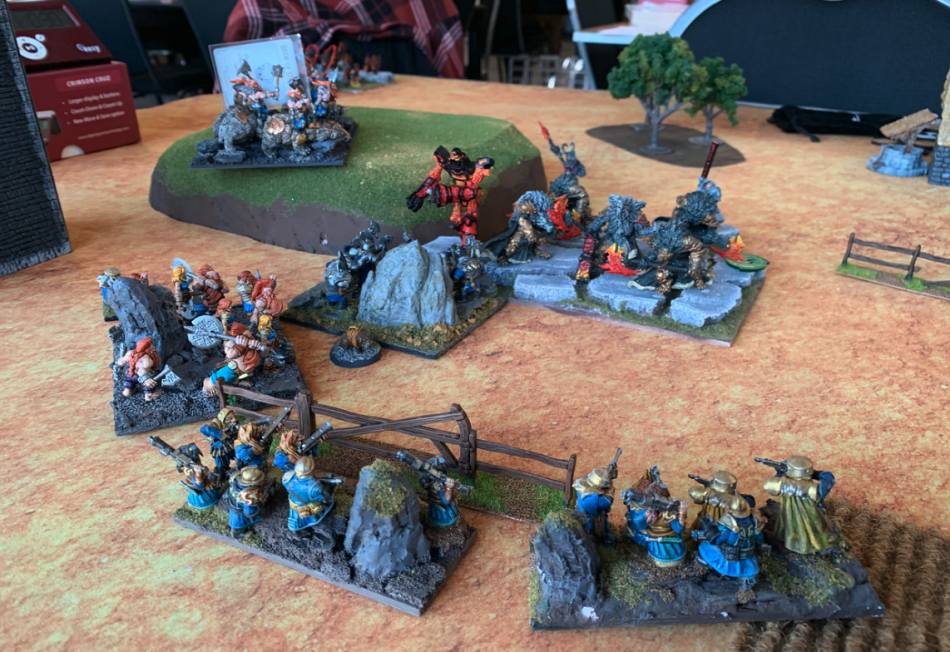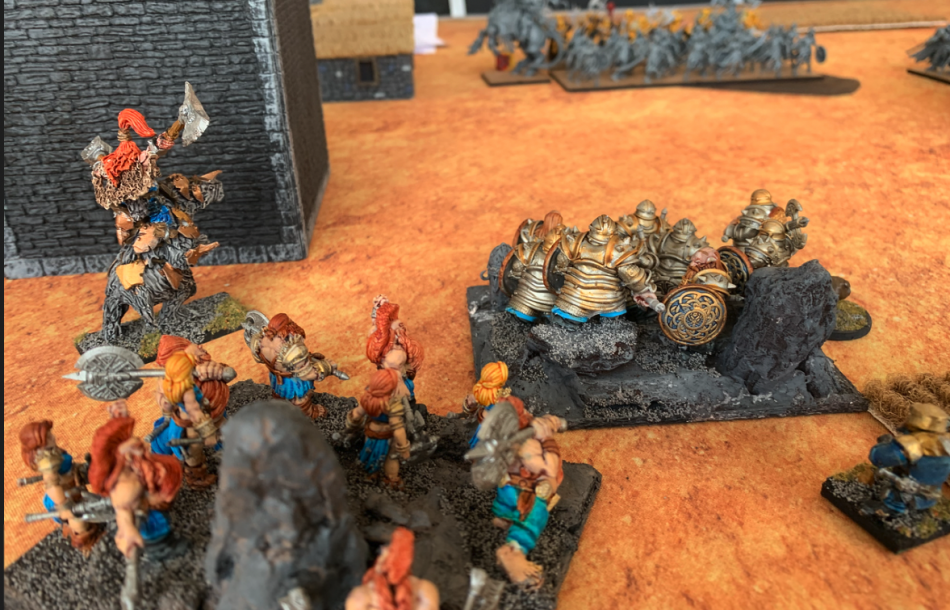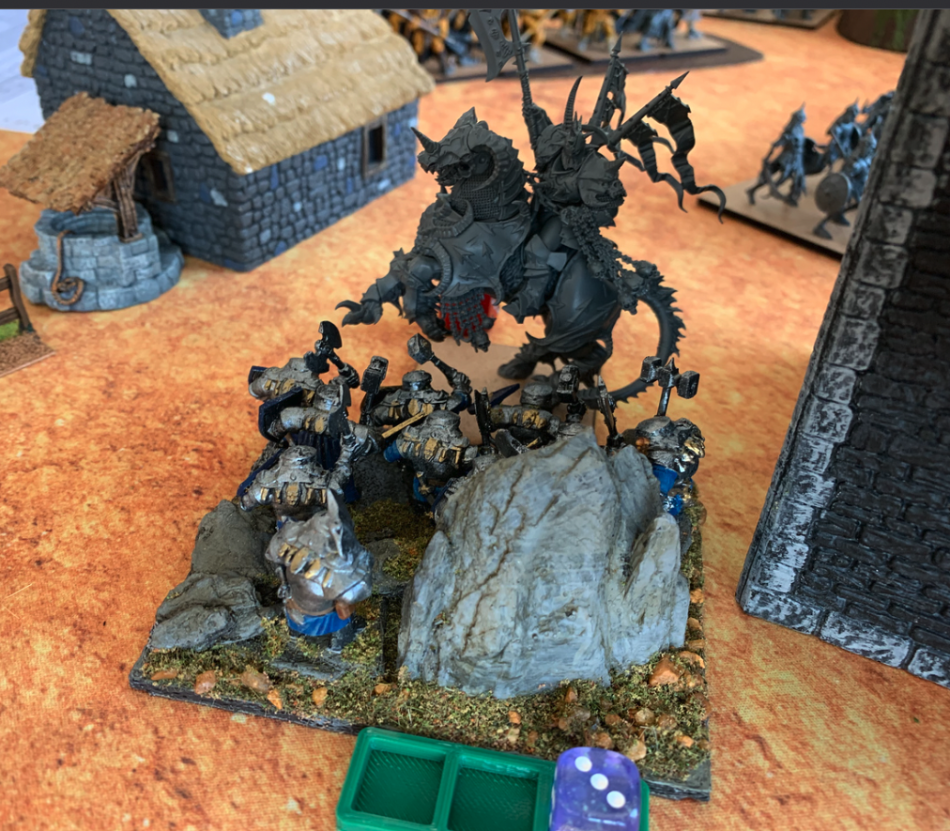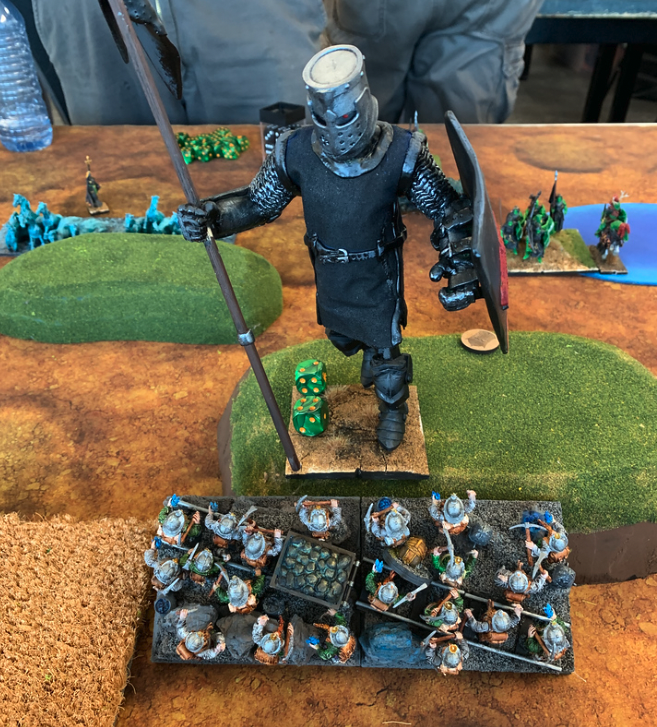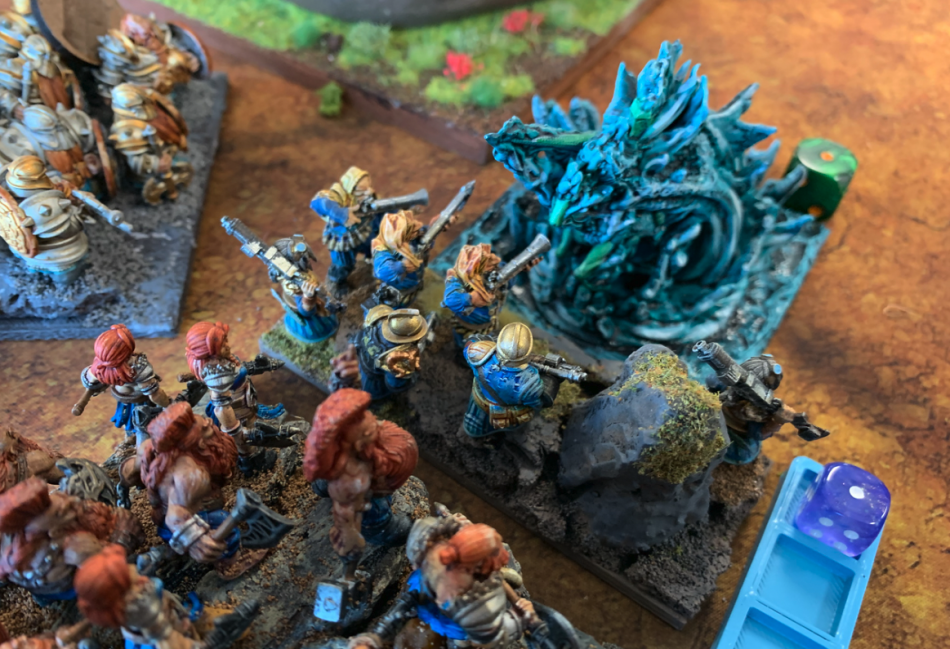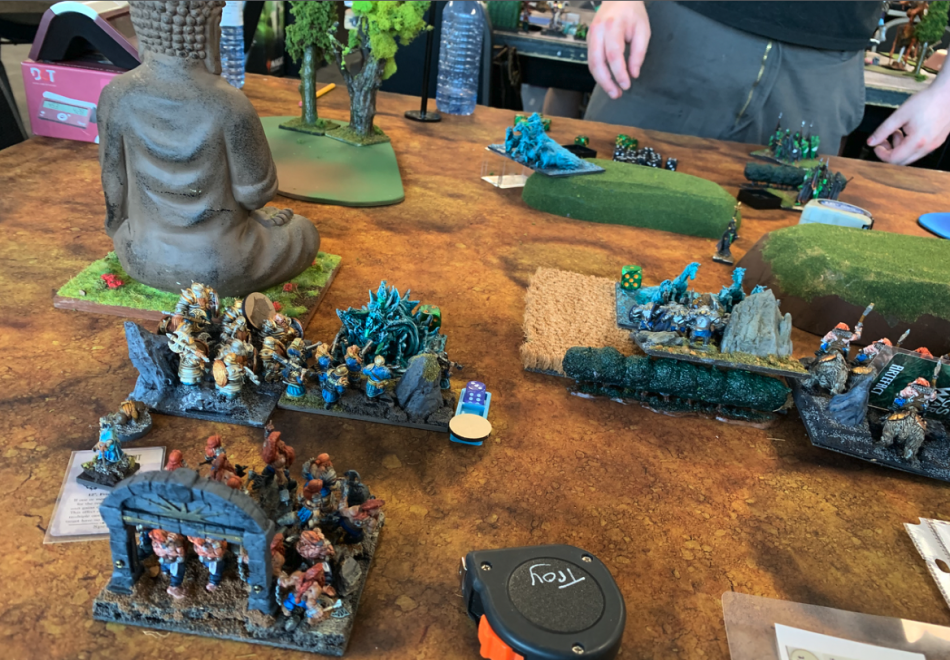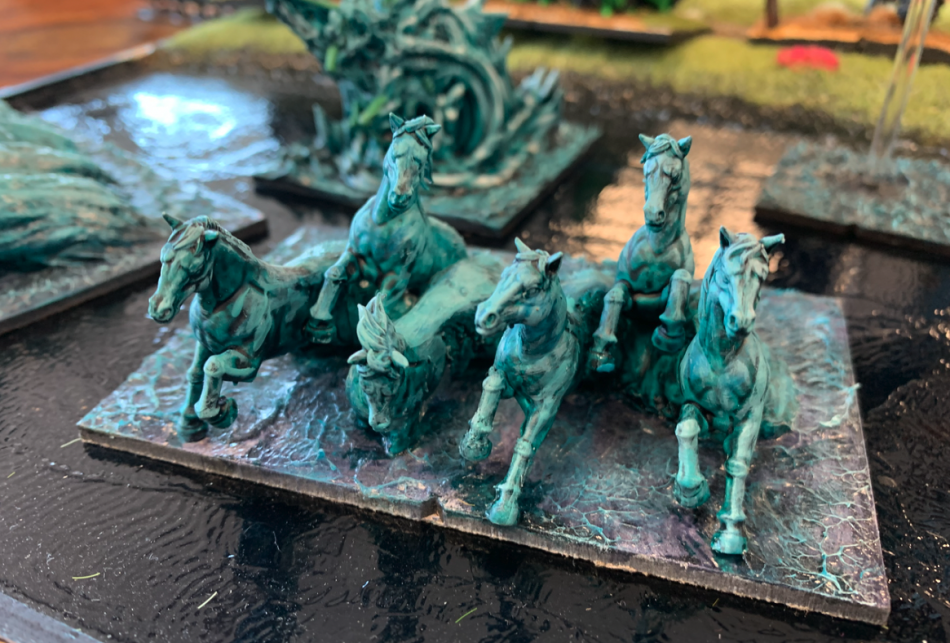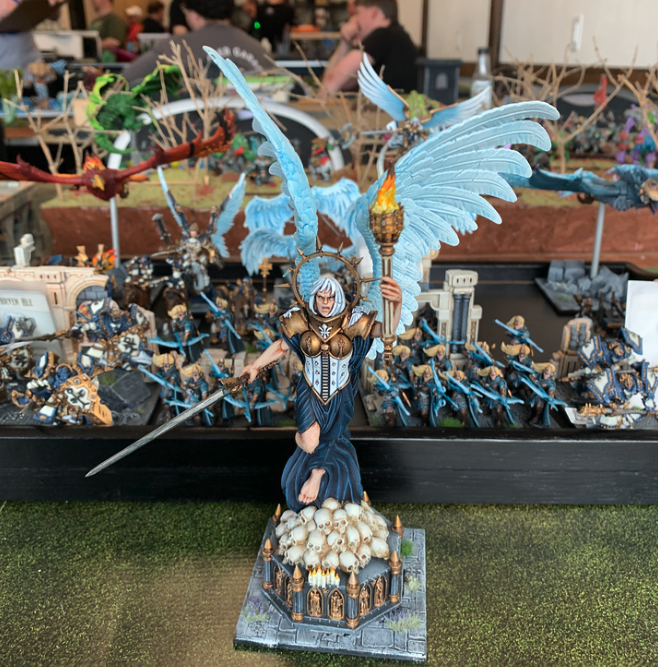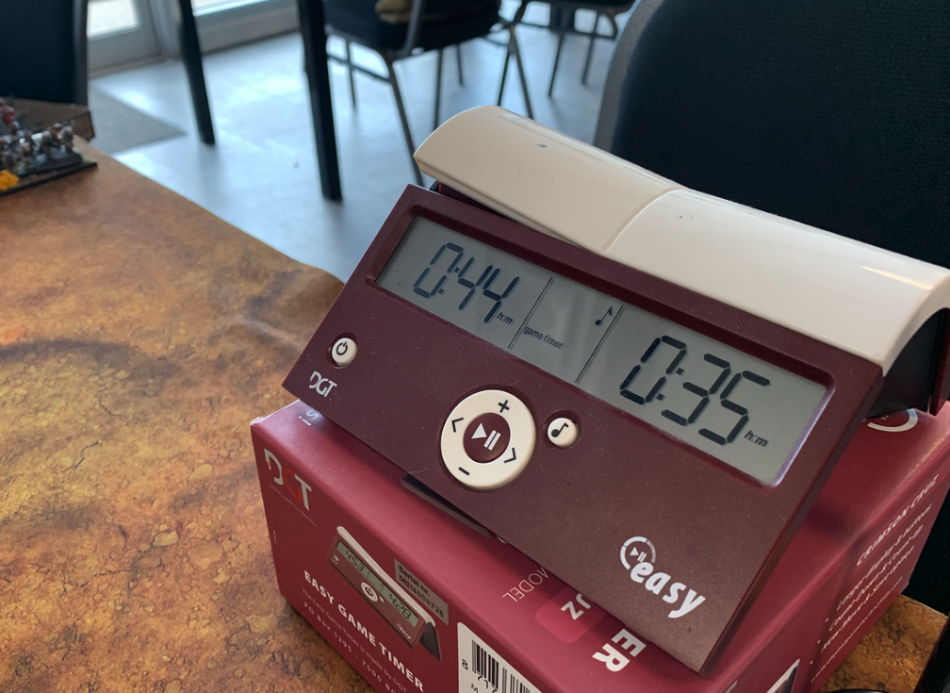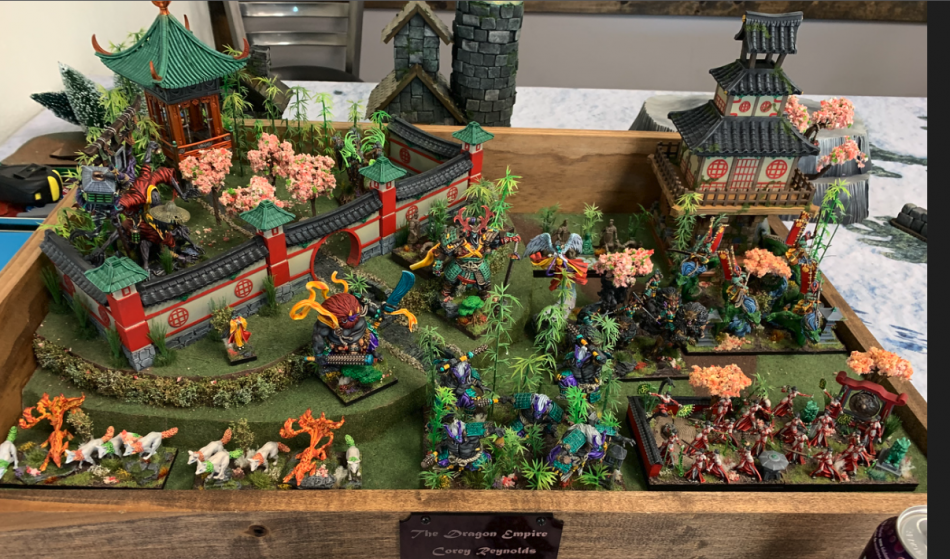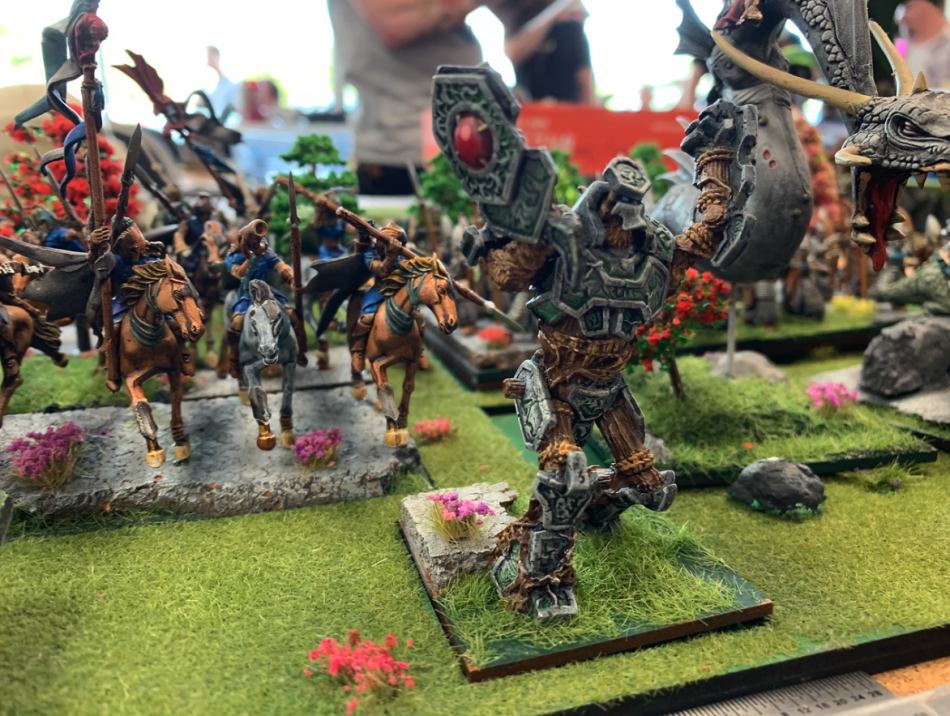Beyond the Wall: A Kings of War Newbie’s First Tourney
By Troy A. Hill
On 12-13 August, this Hoosier (aka, Indiana native) convinced his wife to let him travel the seven-hour trip up to Hamilton Ontario, and participate in my first-ever Kings of War tournament. Hosted by Black Knight games, the two-day, five-round tourney had players from New York, as well as many parts of Ontario.
This particular tourney wasn’t just my initiation to Kings of War (KOW) on a competitive level, but also my first experience playing under the constraints of a chess clock. I was worried that I’d face melt-down brain as I watched the seconds tick by, struggling with analysis paralysis.
A big shout out to Jon and Alex, local organizers of the tourney. They had things running smoothly, despite an unexpected shift to Black Knight Games a couple of months before the tourney.
In case you missed it, I wrote about my first several low-point games in the system here, and decided that KOW was indeed, the best-ever game I’d played. Your opinion may vary, but I’ve enjoyed the heck out of every game so far. Why do I like it?
- Armies are fairly well balanced
- Players are on the game’s Rules Committee
- Fast Play
- Rules are simple
- Community is fun-oriented rather than meta-net-list driven
- Rank-n-Flank in a fantasy setting
Would any of those impressions change in my first tournament? As of the last piece I wrote about KOW, my opinion was shaped only by playing a handful of games, though, I did also watch the Michigan Grand Prix KOW Tournament last year at the Michigan GT Convention.
Normally, I’m a middle-of-the-pack player. This time, I fully expected to finish 28th out of 28 players.
Let’s take a look at my games with my Dwarven warriors, and see what, if anything, might change my impression of the game.
Game one vs Jason’s Orcs
Jason was a great opponent from the other side of Niagara Falls, hailing from New York State. Even though he came out of the north end of the state, I kept imagining his green horde of Orcs all slapping their clubs, and muttering with Bronx accents. He’d been warned about my newbie-ness. And later admitted that he was surprised at how well I played. I didn’t take several opportunities to fall into traps that a new wargamer might.
That didn’t mean I won. But, I did pay attention to the scenario and had enough experience with the dwarven force to know they were a good grind force. Slow, with a good defense stat on most units. When to use which unit, though, I didn’t understand… yet.
If my memory is working, we played the either Pillage or Raze scenario in round one. We’d alternate placing objective tokens. From turn two on, we’d score points for objectives we controlled. Or stop the other from controlling by getting one of our units close enough to contest.
In this game, I learned the value of having a force that moves fast and hits hard. The orc list (the generic orcs, not the newer “Riftforged” line) features Orc War Drummers and Skullpoles. the latter can be added to most of the core units, and are a one-time use that grants the Brutal special rule (adds +1 to the nerve check they inflict on an enemy unit at the end of that combat).
The orc drummer’s Rally aura adds a +1 to the route and waver value of any units within six inches of the drummer. A fifteen-point upgrade can give the drummer a Dread Aura, that works much like a skullpole, but isn’t one use.
Overall, this was a fun game. Just like the honey badger in the real world, my dwarven berserkers on angry badgers (aka Brock Riders) didn’t give a … care… and headed off to challenge one of the counters. I hoped to stalemate the others and win by one. Alas, Jason’s orcs were able to get over and knock my dwarves back off the others. He edged out a victory, with us both having a few minutes left on our clocks.
Game two vs Alex’s Ratkin
This game was an interesting learning experience. Alex is a top-tier player in Ontario, and he’d chosen to build his rat list with a lot of heavy hitters, instead of hordes of chaff.
I realized quickly that I was outmatched, and shifted to my strategy of trying not to get tabled by round three. Fortunately, I did have units on the table at the end of the game. But not many. The dwarves were very bloodied by the rodents and their monsters.
In this scenario, we played Push. We alternated placing loot counters in one of our units. I spread mine out, but Alex dropped all of his on a big rat dude. We then had to get our tokens across the board into the enemy’s side of the table.
I did manage to get one counter into the filthy rat’s side, but it wasn’t to last. Alex managed to kill off the unit carrying it, and the support I’d sent over with it. He also scored a lot of attrition/kill points, to a small handful I’d managed to accomplish with my dwarves’ dying breaths.
Game three vs Bruno’s Abyssals
Here, we played Dominate. The center line of the board was the objective, and we added up the unit strength of all units within 12 inches of the center line.
Bruno won this one, but I managed to get a fair share in the right area. It was a decent recovery for the dwarves.
Here I found two enemies that I wasn’t thrilled with. That #$%!@#$! chess clock, and Bruno’s Abyssals.
This was my first game facing the Forces of the Abyss, and I learned a lot about Regeneration. It seems that Abyssals have a lot of units with that quality. Any time they suffer damage, they get to shrug off each point on a roll of 5+. Shoot the demonic scum for 4 points of damage? They roll four d6 and any 5s get a point negated.
They just don’t die easily.
A lot of Bruno’s force, he said, came from the Warmahordes models. I’m not sure if the giant orb was one of those, but it was well-painted, and I hated for my dwarven sharpshooters to target it. I really enjoyed seeing it on the table.
This was my first problem with the clock. The one at this table decided to start counting up, instead of down mid-game. Perhaps it needed a new battery? Or it knew I wasn’t fond of it. Fortunately, we caught it early and were able to get the TO to beat it into submission.
Game four vs Eric’s Varangur
As a new to Kings of War player, I’d heard of the Varangar but just assumed they were humans corrupted by the abyss. Nope. Those familiar with Pannithor lore will remember that this faction is an offshoot of the Northern Alliance faction and shares some of the core units.
Instead of being stalwart guardians against the abyssal forces, this faction has been adopted by one of the older deities or a demigod from the time before the Celestians. This demigod is no friend of the abyssals but loves to manipulate and drive the baser emotions amongst its new tribes.
While Erik was just past the assembly phase of his army build, with a lot of grey plastic on the table, the figures he chose had an imposing presence. I’d love to see the force fully painted.
We ended up playing Control. The table is divided into six 2-by-2-foot sectors at the end of the game. Points are awarded for each sector controlled – by having more unit strength in the sector than your opponent. Thanks to a timely suggestion from my opponent, I scooted one unit into a barren sector. This allowed me to pull out a narrow victory.
Game Six vs Mark’s Order of the Green Lady
Apologies to Mark if I got the faction incorrect. There are a few different varieties of nature forces in Kings of War. And this was a unique situation. A friend of Mark’s painted an army for Mark, and submitted it to the TOs, without Mark knowing what was coming. He saw the army for the first time right before he began using it.
I was intrigued by its titan. Underneath all of that black cloth and chainmail is a Mantic brand giant model.
Mark’s force was another with Regeneration. As he put it, shooting water is easy, but it’s tough to kill.
Playing the scenario Loot, we were vying for three objectives on the center line of the board. This turned into yet another slug-fest where we were trying to get control of at least two tokens. We each worked on one of the outer objectives and battled over the center. I did kill off a few of his units but ended up timing out.
That pesky clock was annoying. Since I’d played two of the last three games on the same table, and it was the one with the problem of counting up, I suspected it might be trying to do me in. I believe it was this game, but it might have been round five against Erik.
Realizing I had about a minute thirty left on my side of the clock, I staged my dice for two attacks prior to Mark finishing his turn. I needed to move two units for charges and declare two counter-charges. That was maybe 15 seconds. Declared no shooting.
I pointed at a unit, “Attacking!” I grabbed the dice, rolled them, sorted the hits quickly, and rolled again for wounds. Shouldn’t have been more than my minute-thirty. Looked at the clock and it’s counting UP and at five minutes plus.
Huh? There is no way I used my 90-ish seconds, and another five minutes (the clocks count UP after hitting zero. It would be better to start flashing zeros instead.)
We both agreed the clock was crazy, and my opponent let me finish the other attack and then ended my turn to a “clock out” status.
Mark won. Shooting at water, and killing it really is difficult.
Overall impressions
The fact that I played on the same table a couple of times didn’t matter. Each round has the same number of terrain pieces on each and every table: two each of hills, forests, flat & difficult, blocking, and obstacles. Their location changed from round to round, with maps provided to each player. So each table was the same with only minor variations based on the size and shape of the terrain pieces.
The tournament was well run. Jon was doing some juggling of player matchups from round three on, and that’s why I ended up at two of the tables (11 and 13) two separate times.
Prize support was outstanding, and none of it was tied to the final ranking. In fact, the prizes were awarded in reverse standing order. The winner of the coveted wooden spoon got to select first and grabbed the starter set. I finished 22nd out of 28. It was that one win against Erik that kept me from the wooden spoon.
As for the clocks?
They do have a great impact on how I played. The dreaded neurodivergent melt-down that I feared never happened. However, it was tight in all of my games. I don’t recall finishing with more than two minutes on the clock. Having the chance of a turn 7 in most of the scenarios makes clock management a must. I don’t see how goblin players do it with their massive amount of units on the table to manage.
Advice for myself, and other new players heading into your first tourneys: Minimize your unit count! Doing less each round will help with clock management. Losing because I timed out isn’t what I want to do. I’d rather lose because of dumb deployment, and poor dice rolls than let the clock beat me. Besides, having less unit drops in each game, gives me less I have to think about.
Now that I’ve got eleven games of experience under my belt with the dwarves (five at the tourney, and six smaller ambush level games), what’s next? I’m heading up to Michigan GT for the KOW tourney there.
And I’m changing to Night Stalkers, and giving the Dwarves time to lick their wounds and enter names into the book of grudges.
Why change armies? Because it’s never about winning for me. I’m there to have a great time rolling dice, moving models, joking, and laughing with my opponents. If we both enjoy the game, then we’ve both won.
But that #%^#@#! clock can shove it!

